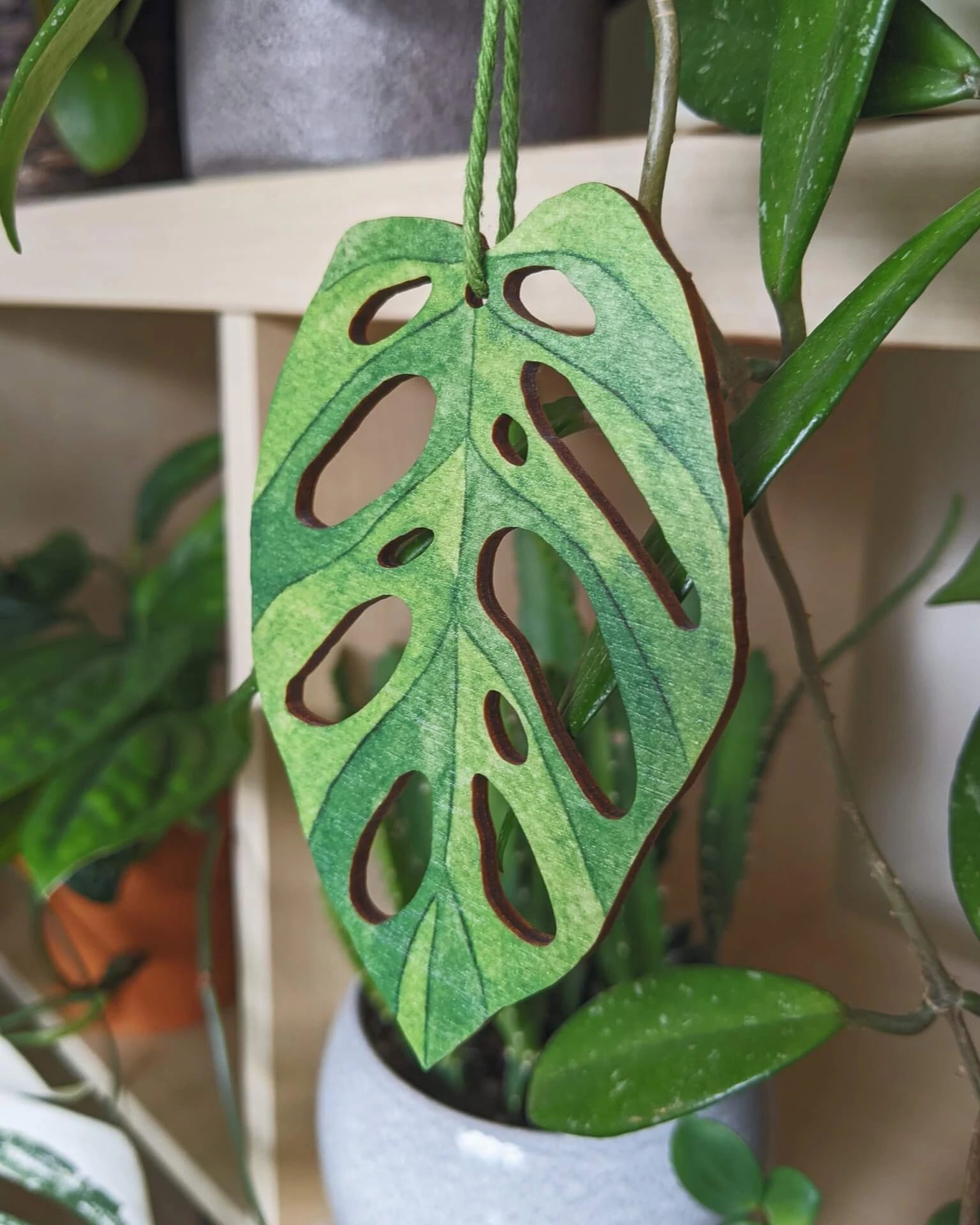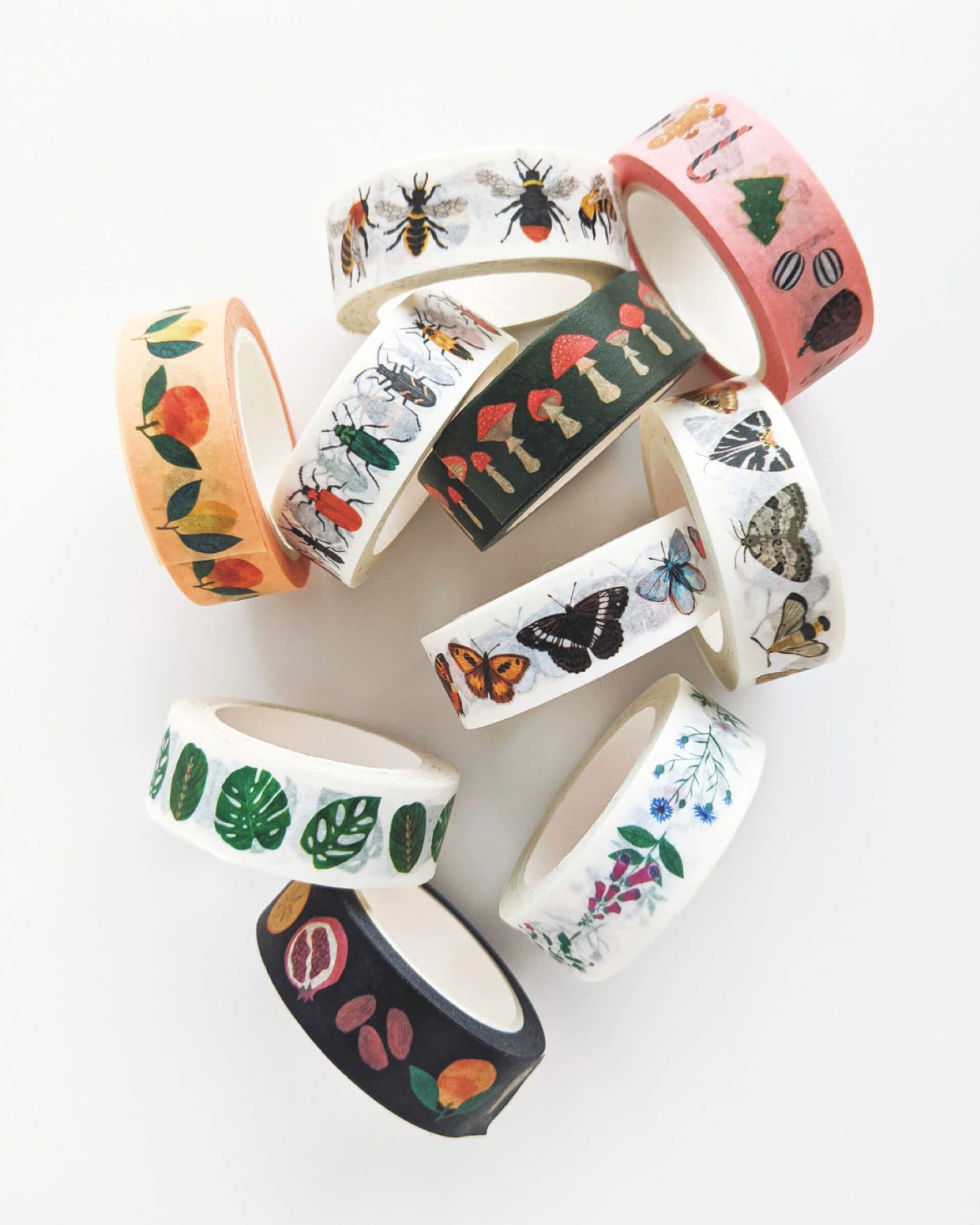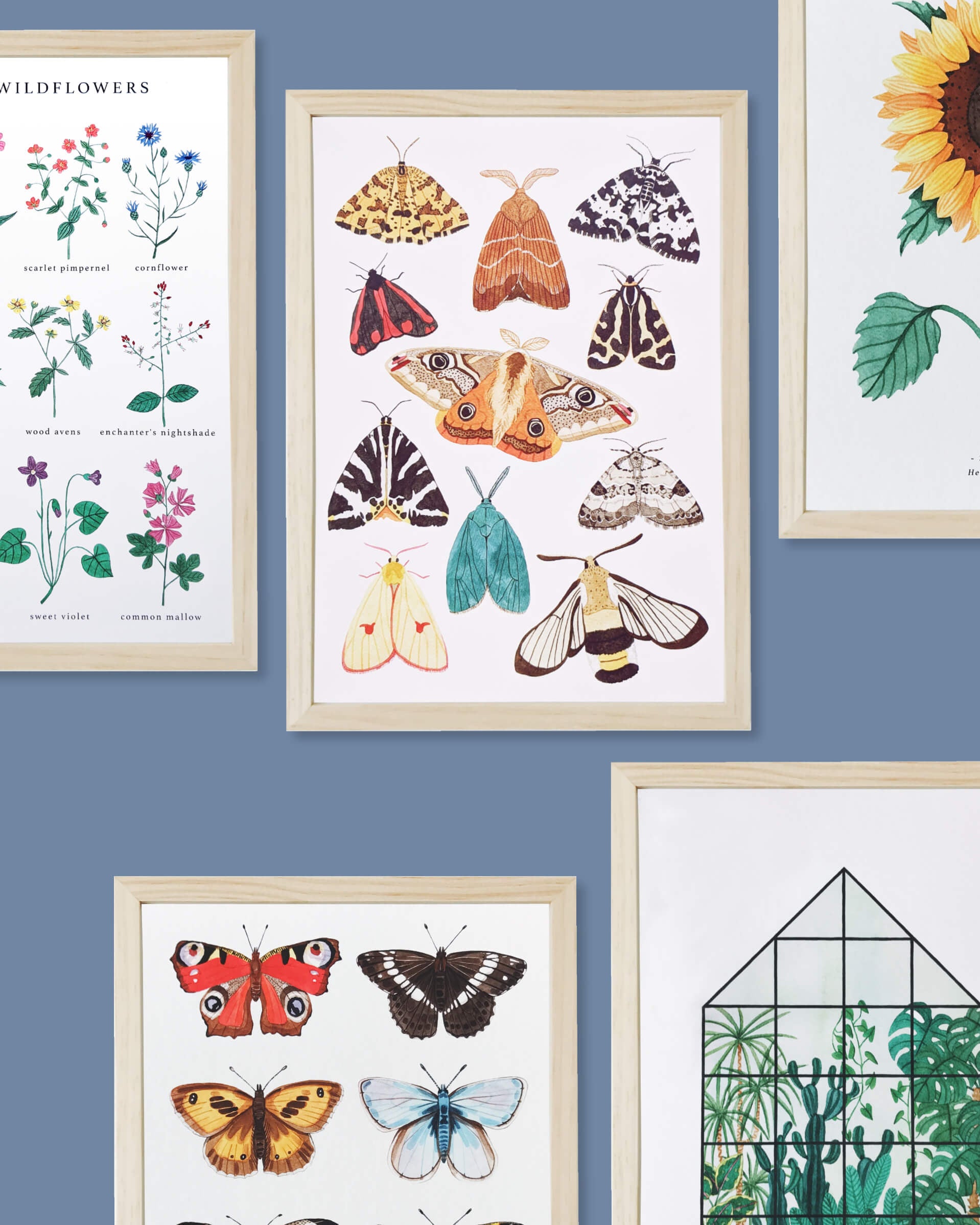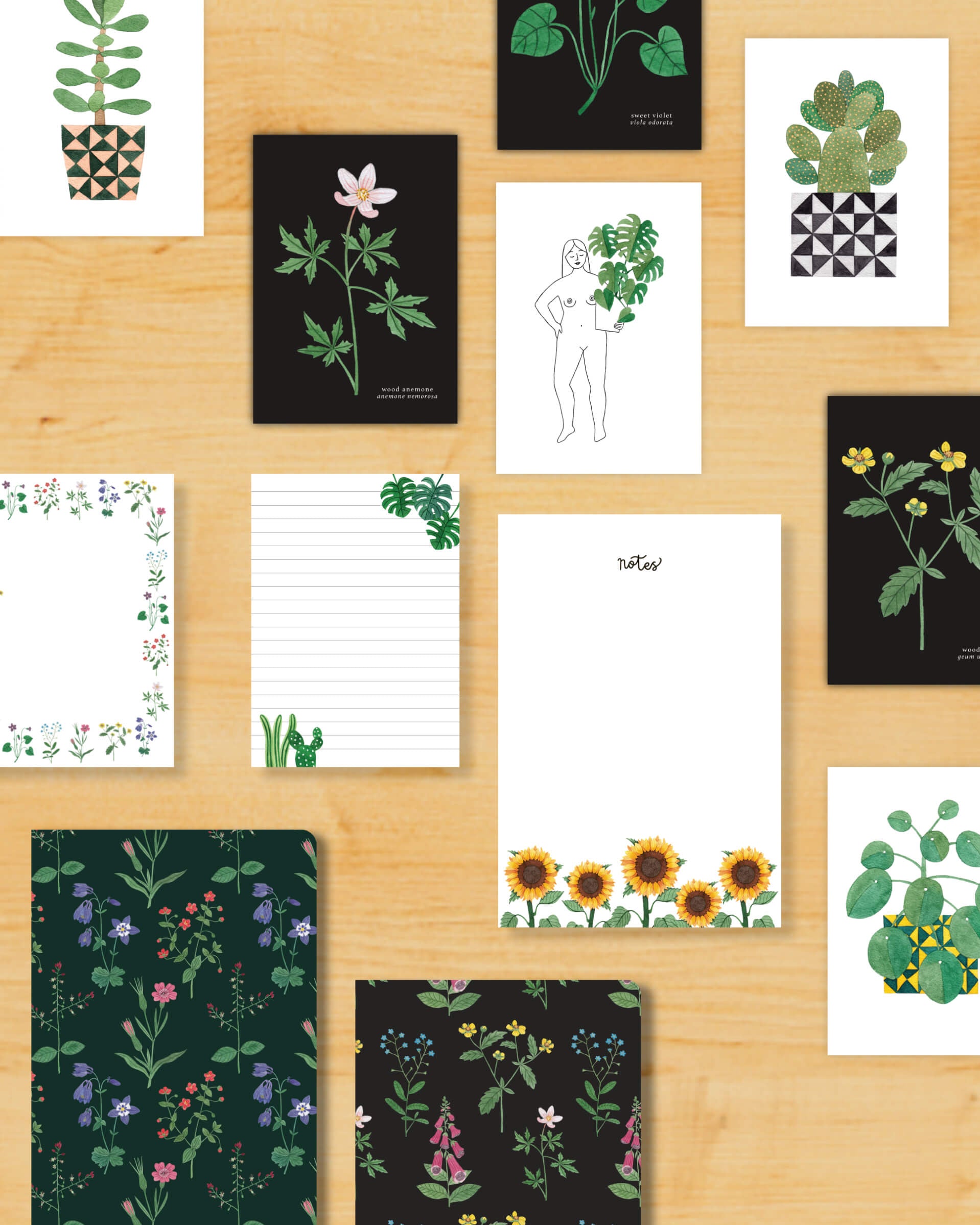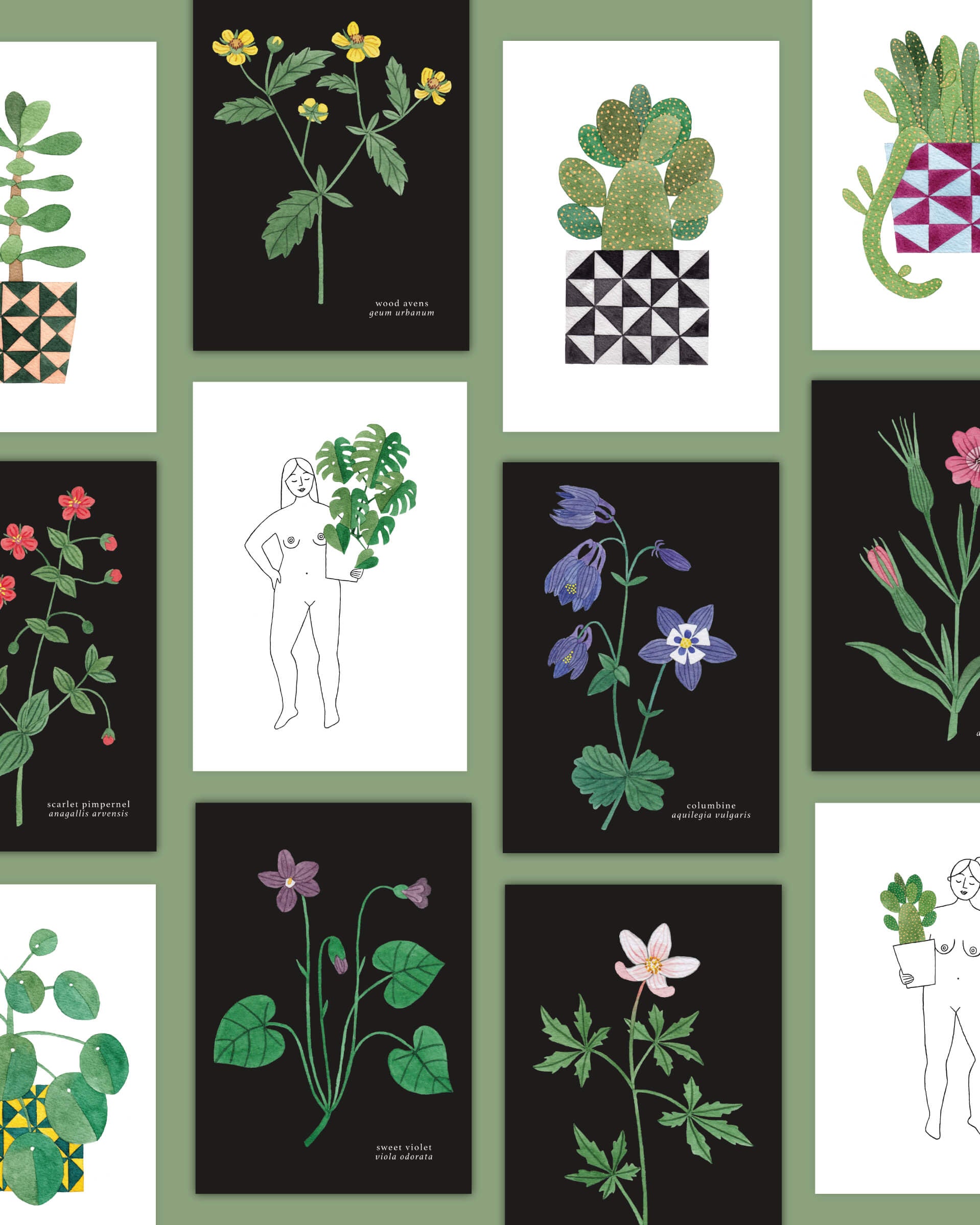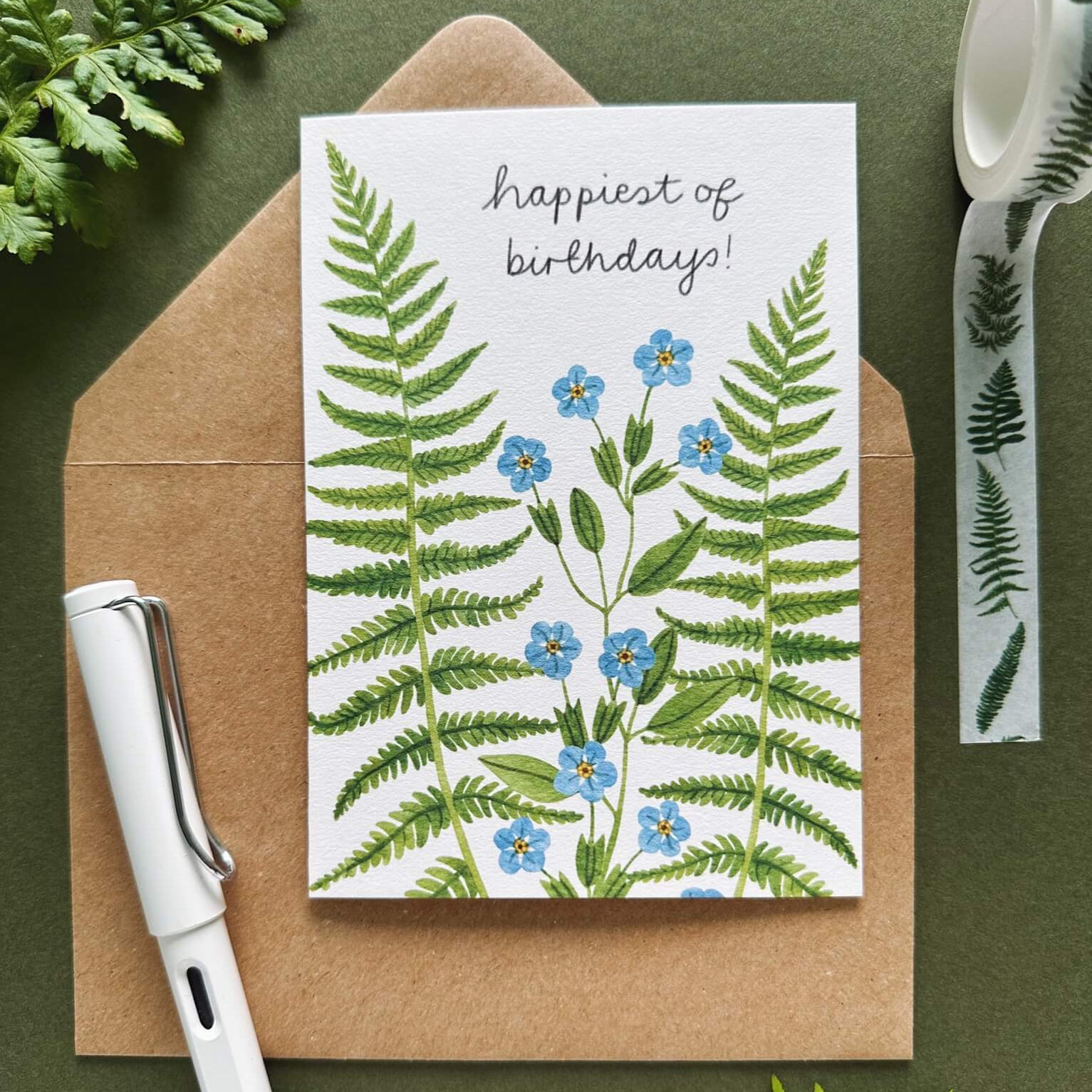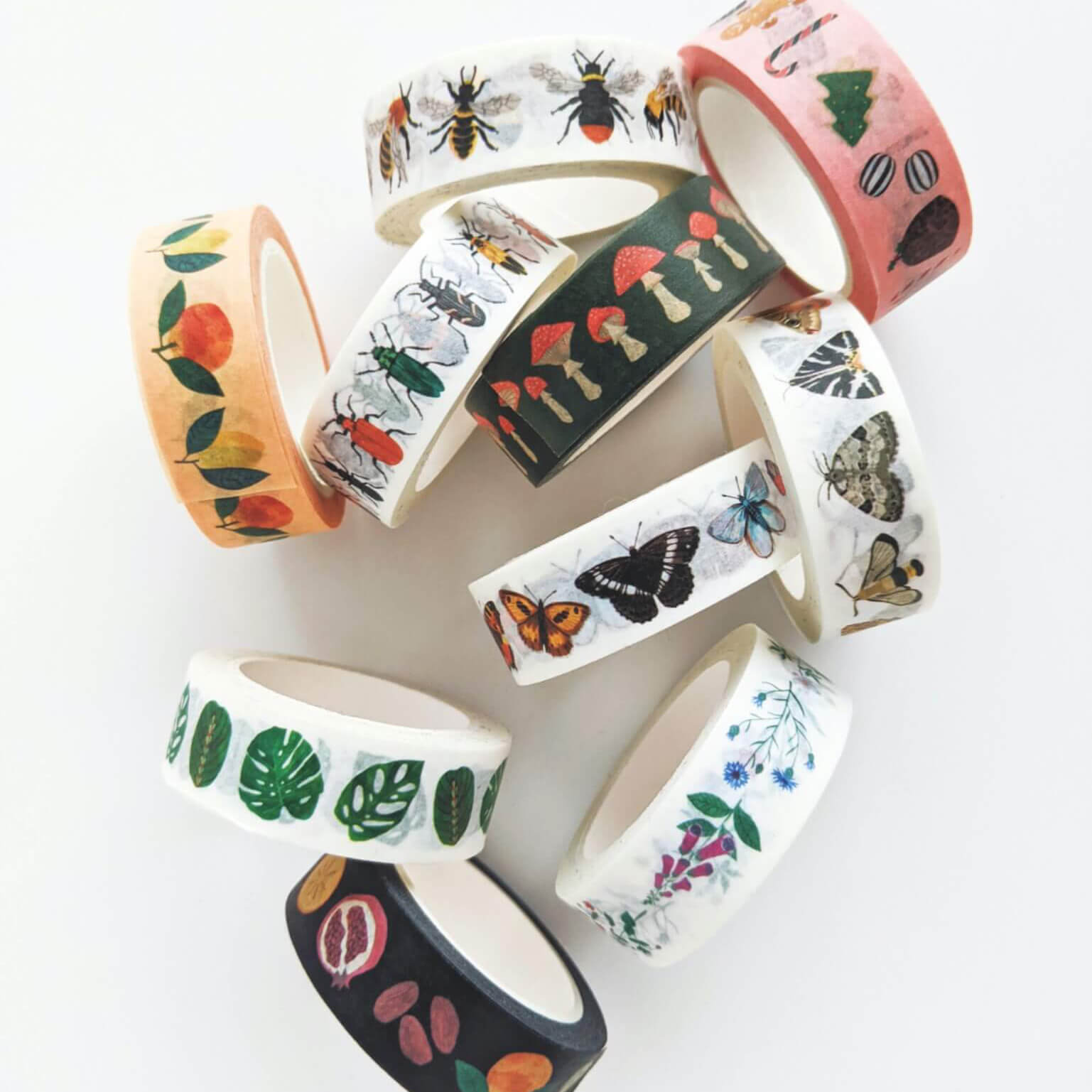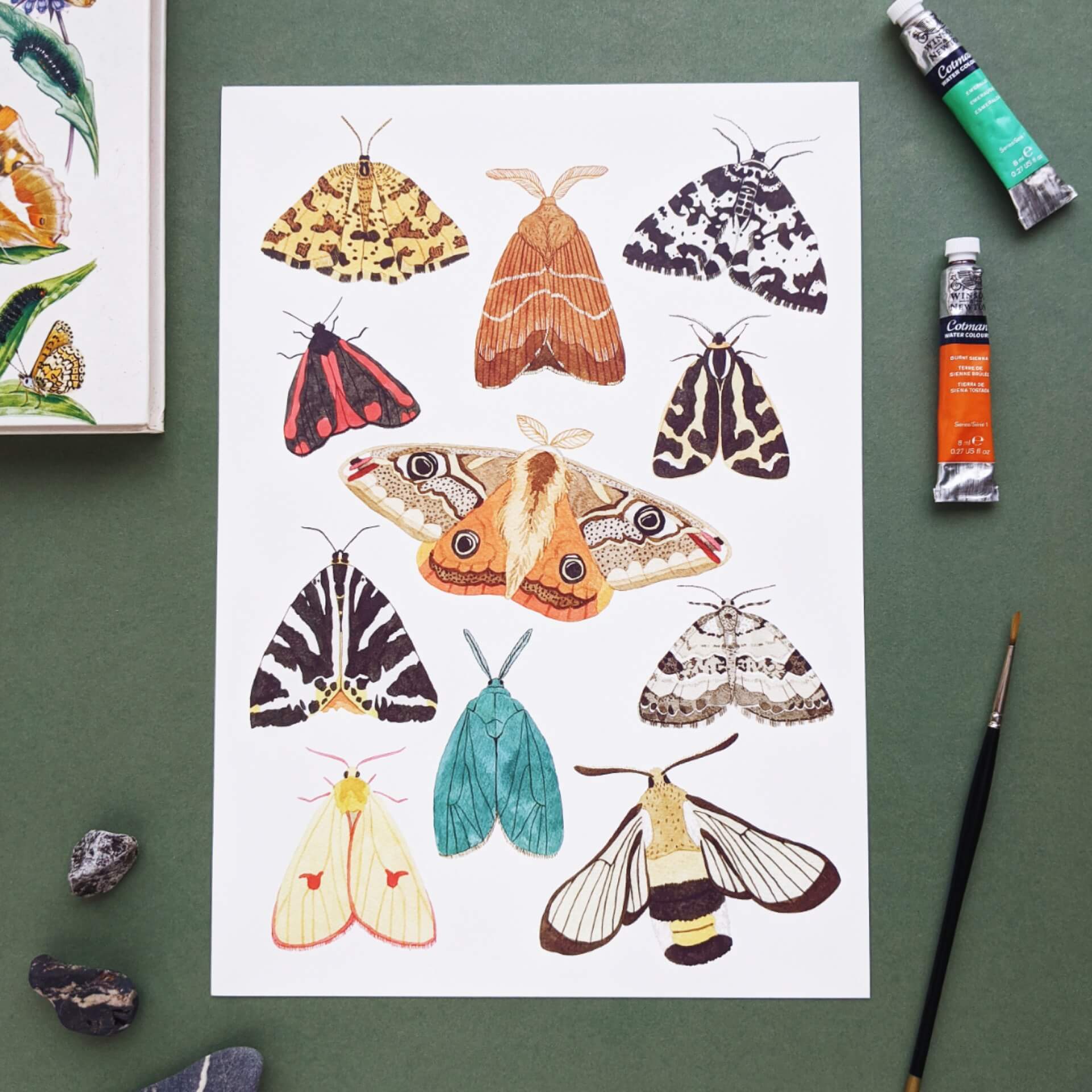
Watercolour has become my primary medium over many years, and now all my creations originate from my watercolour illustrations. During my childhood and school years, I never really used watercolour. I wasn't introduced to it, so I tended to stick with familiar and comfortable mediums such as acrylic or oil paints.
However, when I had my first studio in Peckham (over a decade ago!), I began to experiment with both old and new mediums. I remember finding watercolour surprisingly challenging to grasp initially, but there was something about it that drew me to keep practising and improving. I fell in love with its layering possibilities and the way it could highlight the texture of the paper (as well as how quickly it dried!)
Through my daily art challenge in 2016, I developed a better understanding of how watercolour works. Although I still have much to learn (we’re all on a journey), I’ve honed my technical skills, and I’m much happier with the results of my illustrations. In this post, I want to share some advice on what you should keep in mind when using watercolour.
1. Be patient
It's crucial to let the paint dry adequately before applying another layer, as rushing can result in undesirable "cauliflower" marks. While these marks might not always be detrimental, they often leave an unsatisfactory appearance, depending on the subject of your painting.
For wet-on-wet techniques, patience and focus are necessary from start to finish to ensure the paint goes where you want it. You need to find the right balance between wetness and dryness for the next application.
Additionally, mixing colours may take some time to achieve the desired consistency and hue before you start painting.
2. Use the right paintbrush
In my opinion, the choice of paintbrushes makes a significant difference, especially for detailed illustrations with crisp edges, like mine. Paintbrushes should hold water well and maintain their shape when dry or wet.
For my illustration style, I find that using the thin side of the paintbrush works best, regardless of the area I'm painting. Sometimes, I opt for a larger paintbrush, but I have to be cautious not to load on too much paint.
3. Mix with the optimal amount of water
I learned this lesson the hard way! Some paints require the right amount of water to prevent them from becoming sticky when dry. From my experience, this is most common with green shades. If you want to darken the colour, add black. If you’d like a more opaque look, consider using gouache – a medium that behaves like watercolour, but is opaque like acrylic paint.
4. Use a little bit of paint
When working with watercolour, it's natural to think of soaking up a significant amount of paint with your brush. However, unless you're painting a large area like a sky background, excessive paint is unnecessary. Instead, use a small amount at a time, and you can always add more if needed. Just remember to mix enough paint before you begin!
Of course, the amount of paint used depends on the style you're aiming for. Some artists happily apply watery paint in blobs and let it dry untouched, leading to interesting and unpredictable results. However, for more detailed paintings, using a small amount of paint each time makes it easier to control and reduces the chances of making mistakes. Applying too much paint can cause it to run over the area you're working on, and that's when having a kitchen roll nearby comes in handy…
5. Keep kitchen roll close by
To prevent paint from running and to help maintain control over your work, regularly clean and dry your paintbrush or remove excess paint from it while you're painting. Having a few sheets of kitchen paper within reach is essential. It's a must on your painting table.
6. Always have a test paper
The colour of watercolour paints from pans or tubes may not always match your expectations. Having a test paper beside you while you paint can prevent using the wrong colour and assist with consistency for your artwork. It also helps to see how your mixing palette will appear on the paper and ensures you've added the optimal amount of water.
7. Use a clean water jar
Dirty water can affect the colour in your painting or contaminate the paints on your palette. So it's vital to change the water in your jar before it becomes murky. Personally, I change my water once or twice while I'm painting, depending on the size of the piece. Not changing the water isn't the end of the world, but colour is something I take seriously in my work, so I make sure my water jar never gets too dirty. My rule of thumb is to change the water when I can no longer see through the glass.
I've heard that some artists use two jars of water, one clean and one dirty. However, I prefer the opportunity to get up and stretch my back and legs each time I need to change my water jar!
Enjoy your watercolour journey
Remember, there are no fixed rules for painting with watercolour, and the key is to practise in order to refine your skills. Nevertheless, I believe these tips provide a good starting point and I hope they help you on your watercolour journey!


